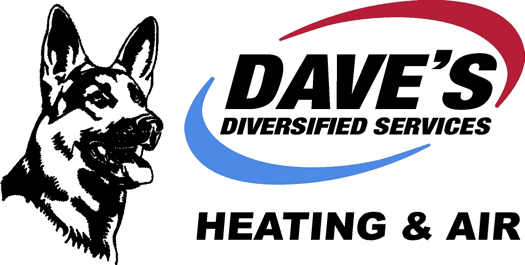
A furnace is almost always a background player in your home, ensuring you're warm across the cold winter months. It regularly won't be noticed until a malfunction appears.
One source might be that your furnace has a cracked heat exchanger. It can be a safety risk, so it’s important to familiarize yourself with the signs of a cracked heat exchanger and what you should do if you are worried that might be the problem.
What Is a Heat Exchanger in a Furnace?
A heat exchanger helps move heat from the combustion chamber inside your furnace to the air that flows throughout the air ducts. It typically does this using coils or tubes that warm the air while acting as a barrier to keep gas created in the combustion chamber, called flue gasses, from leaking out into your home.
Is a Cracked Heat Exchanger Dangerous?
Thanks to its central role, it shouldn't come as a surprise that a damaged heat exchanger can be very dangerous. Cracks in the heat exchanger can enable dangerous gasses – including carbon monoxide, which can be lethal – to flow through your home.
For that reason, never turn on your furnace if you suspect it has a cracked heat exchanger, as letting it run could make the whole family ill. Call an HVAC professional as soon as possible if you believe your heating has a cracked heat exchanger that needs to be repaired.
Four Signs of a Cracked Heat Exchanger:
- Furnace switches off: Cracks in the heat exchanger can cause your furnace to shut off.
- Odd Smells: If the air coming out of your furnace has a strong chemical smell, it might be a sign gas is leaking through cracks in your heat exchanger. These byproducts, which can smell like formaldehyde, are a common warning sign.
- Carbon monoxide alarm goes off or you notice health problems: If a cracked heat exchanger is emitting carbon monoxide into your home, your carbon monoxide alarm may go off or household members might struggle with signs of carbon monoxide poisoning. Side effects include headaches, dizziness, weakness, nausea, vomiting or feeling tired. If the alarm goes off or you feel unusually tired, leave the home immediately and then call for help.
- Soot: If you find black sooty buildup near the exterior of your furnace, it’s another sign something may be seriously wrong.
What to Do if a Furnace Heat Exchanger is Cracked
If you suspect your furnace has a cracked heat exchanger, contact a pro experienced in furnace installation Front Royal as soon as possible so they can take a look at your system and, if necessary, perform a furnace heat exchanger replacement. Costs will differ depending on the situation, but estimates run in the neighborhood of $1,000 to $3,000.
However, the good news is that heat exchangers are often covered by the warranty. You should review the warranty paperwork on your furnace, because while the warranty might not cover the entire cost of repairs, it still may significantly reduce your bill.
How to Avoid a Cracked Heat Exchanger in Your Home
One of the most convenient ways to avoid problems in your furnace overall is with routine furnace maintenance. Furnaces work the best when they operate efficiently. Contacting a skilled professional to check your furnace for worn-out parts, clogs in the air filters and other potential problems can keep you from getting a big bill later on.
It’s also a good idea to take a look at your furnace filters every few months – it’s ideal some filters be swapped out every 90 days or sooner if they are dirty or grimy. While the filters are not part of the heat exchanger itself, the strain of pulling air through a clogged filter makes your entire furnace work more vigorously to complete its job. And the harder your furnace needs to run, the more deterioration pieces like the heat exchanger will experience.
